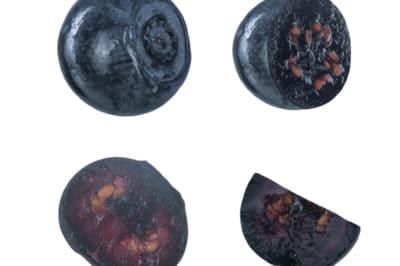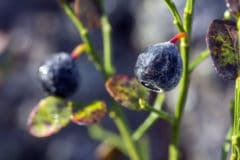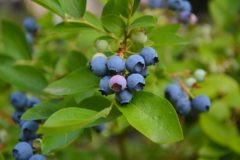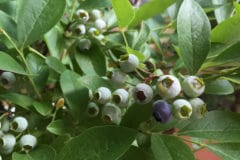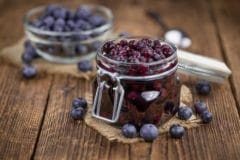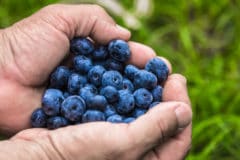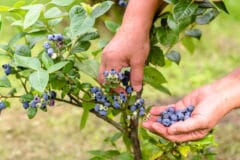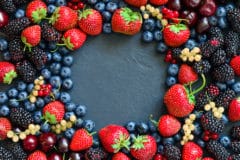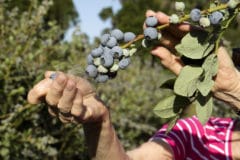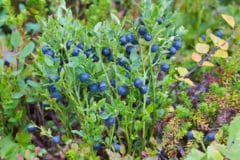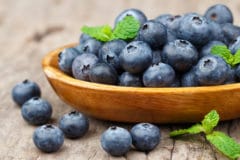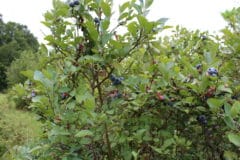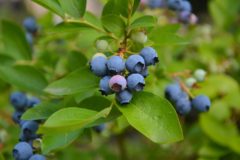Eastern Huckleberries
Black huckleberry (Gaylusaccia baccata) grows from southeasern parts of the United States and up into Canada. Box huckleberry (Gaylusaccia brachycera) are native to the Appalachian area. Huckleberries look like blueberries, but the they don’t have the sweet taste of blueberries. The berries also have 10 large seeds, which is a lot for such a small berry. They are native to eastern North America but aren’t grown commercially. Berry growers prefer highbush, rabbiteye, and lowbush blueberries.
Western Huckleberries
Huckleberries also grow in western United States and Canada. These berries are cousins to eastern huckleberries. Many people refer to them as bilberries and whortleberries. Like blueberries, they belong to the heath family and need acidic soil. Rather than producing cluster of berries like blueberry bushes do, they produce single berries that look like blueberries.
Dwarf Huckleberries
Dwarf huckleberry varieties proliferate throughout North America. They only grow to about 24 inches tall. The berries are bright blue with a delicious, sweet flavor, just like blueberries. The Native Americans collected dwarf huckleberries and dwarf blueberries as a food source. Modern berry growers don’t bother with these dwarf varieties because of their small size.
Toxic Berries That Look Like Blueberries
When you’re trying to determine if a wild berry is a blueberry, make sure you know which ones are toxic. The following are the common toxic berries that can grow in your yard:
- Moonseed (Menispermum canadense) – The seeds of this plant are moonshaped and produce dark blue berries in clusters. They have one seed and have a bitter flavor.
- Black nightshade(Solanum nigrum) – These berries are dark purple, growing in clusters like blueberries. They are more toxic when they’re green.
- Pokeweed(Phytolacca americana) – These late summer dark purple berries look very tempting. The foliage of the plant is more toxic than the berries but you can still become ill from ingesting them.
Before eating any wild berries, make sure you know how to distinguish between edible and toxic berries. Also, check your yard for any of the common toxic berries that could be tempting to your children.
